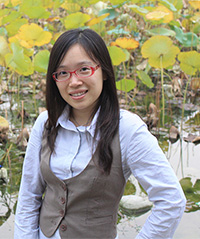
1. Mu, Y*., Cerritos, C., & Khan, F. (2018). Neural mechanisms underlying interpersonal coordination: A review of hyperscanning research. Social and Personality Psychology Compass. e12421.
2. Mu, Y., & Gelfand, M. J. (forthcoming). The neural mechanisms underlying social norms: Norm detection, punishment and compliance. In Kirmayer, L., Kitayama, S., Lemelson, R., & Worthman, C. (Eds.) Culture, Mind, and Brain. Cambridge University Press. (Book Chapter)
3. Mu, Y*., Han, S., & Gelfand, M. J*. (2017). The role of gamma interbrain synchrony in social coordination when humans face territorial threats. Social Cognitive and Affective Neuroscience, 12(10), 1614-1623.
4. Mu, Y., Guo, C.Y., & Han, S*. (2016). Oxytocin enhances inter-brain synchrony during social coordination in male adults. Social Cognitive and Affective Neuroscience, 11(12), 1882-1893.
5. Mu, Y*., Kitayama, S., Han, S., & Gelfand*, M. J. (2016). Reply to Jacquet et al.: Culture and the neurobiology of norm violation detection. Proceedings of the National Academy of Sciences of the United States of America, 113(21), E2874. (Commentary Letter)
6. Mu, Y*., Kitayama, S., Han, S., & Gelfand*, M. J. (2015). How culture gets embrained: Cultural differences in event-related potentials of social norm violations. Proceedings of the National Academy of Sciences, 112(50), 15348-15353.
7. Chiu, C.Y., Gelfand, M.J., Harrington, J.R., Leung, A.K.Y., Liu, Z., Morris, M.W., Mu, Y., Shteynberg, G., Tam, K.P., Wan, C., & Zou, X*. (2015). A Conclusion, Yet an Opening to Enriching the Normative Approach of Culture. Journal of Cross-Cultural Psychology, 46(10), 1361-1371.
8. Mu, Y., & Han, S*. (2013). Neural oscillations dissociate self-related attentional orienting versus evaluation. NeuroImage, 67, 247-256.
9. Mu, Y., & Han, S*. (2010). Neural oscillations involved in self-referential processing. NeuroImage, 53, 757-768.
10. Mu, Y., Fan, Y., Mao, L., & Han, S*. (2008). Event-related theta and alpha oscillations mediate empathy for pain. Brain Research, 1234, 128-136.
(*: corresponding author)
